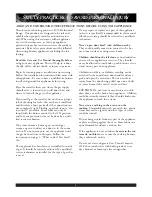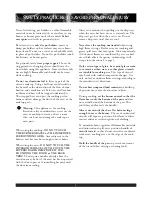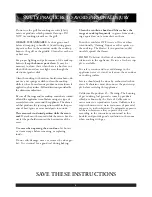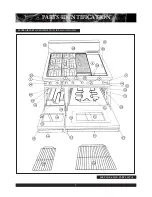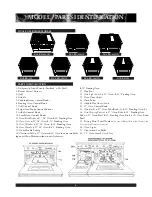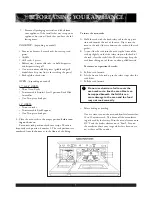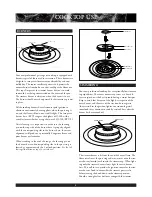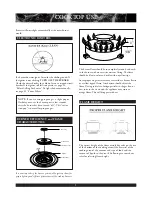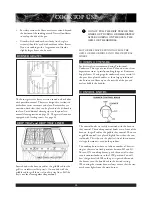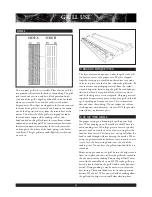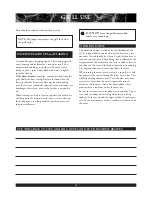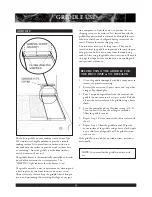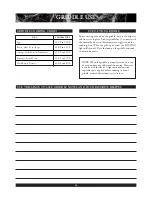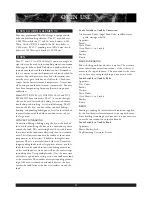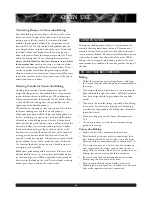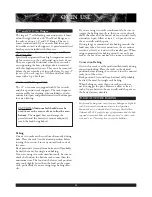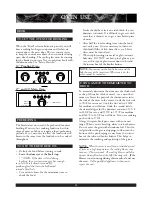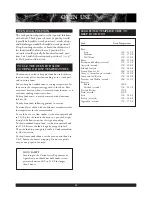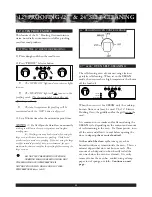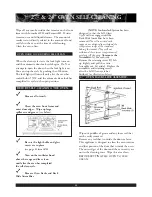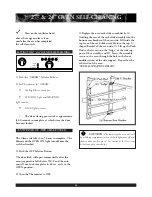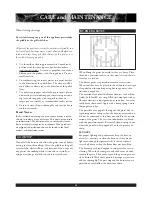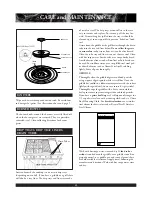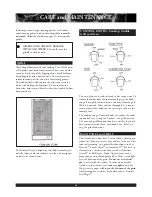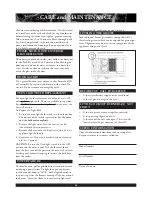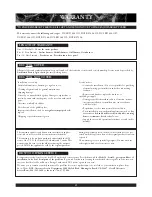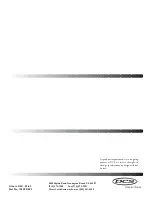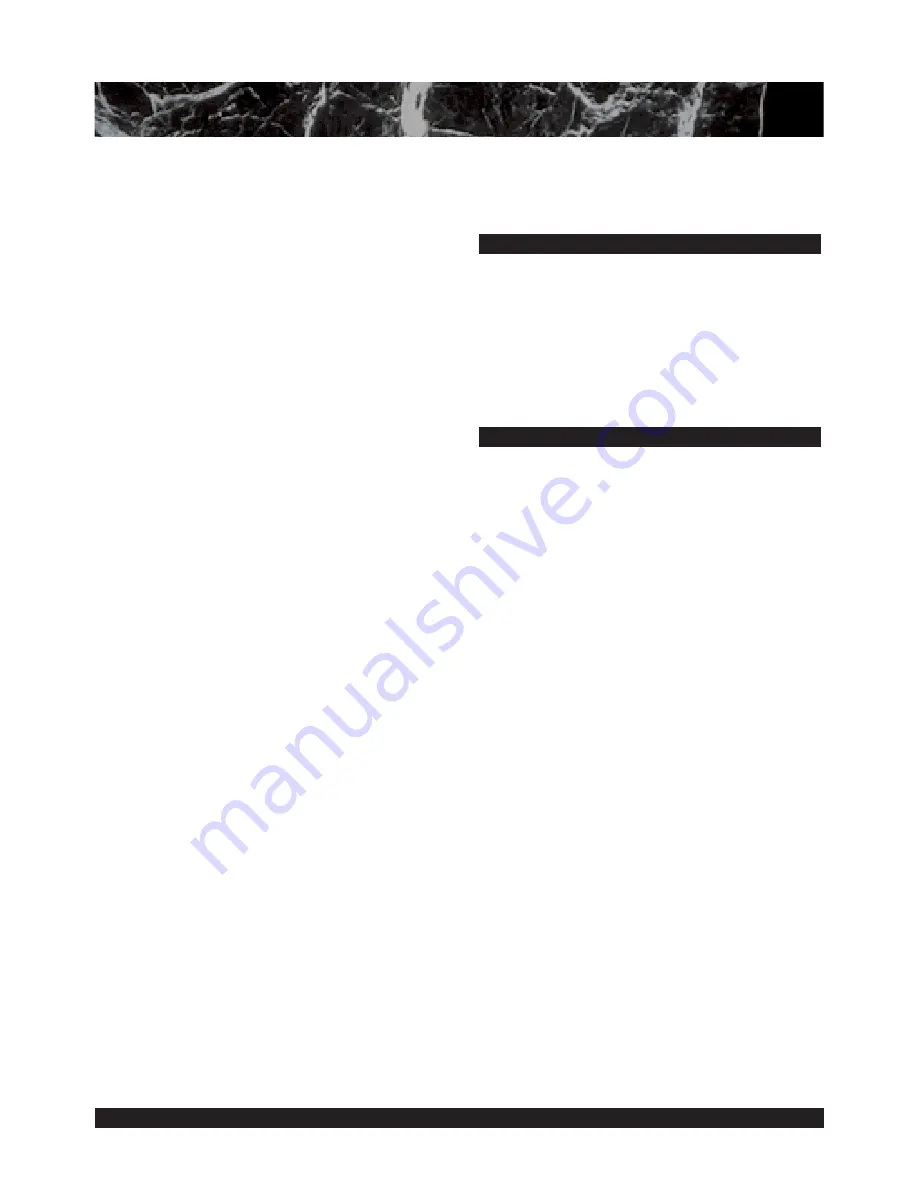
OVEN USE
Converting Recipes to Convection Baking
Low sided baking utensils will give the best results as the
hot air can reach all sides of the food easier. The oven tem-
perature can be left the same as the recipe and the food
cooked a shorter period of time. The temperature can be
lowered 25ºF to 50ºF and the food will probably take the
same length of time to cook as the recipe states. If you find
that food is adequately browned on the outside, but not
done in the center, lower the temperature another 25ºF and
add to the baking time. When reducing the temperature
always check the food for doneness, a minute to two before
the minimum time
stated in the recipe, as time can always
be added. Some recipes will cook faster then others. There is
no way to predict exactly how long each recipe will take
when you convert it to convection. Convection will be easier
to use after you have used it a few times as you will begin to
understand the way it bakes.
Selecting Utensils for Convection Baking
Cooking by convection does not require any specially
designed baking utensils. You probably have many utensils
in your kitchen that are suitable to use. When choosing a
baking utensil, consider the material, the size and the shape
as they all affect the baking time, the palatability and the
appearance of the finished product.
Metal bakeware (aluminum, steel and cast iron) all result in
the fastest cooking time and the best end product.
Aluminum pans work well for all types of baked goods. For
the best browning, use a pan with a dark or dull finish that
absorbs heat, when baking pies and breads. A shiny finish
works best for cakes and cookies, since it reflects some of the
heat and provides a less intensive cooking surface. Cookie
sheets with only one edge will give the best results, as the
heated air can circulate all around the sides of the food. For
roasting use the bottom of the broil pan and elevate the
meat on a metal roasting rack. Glass-ceramic or glass utensils
do not conduct heat as well as metal, but they can be used.
Use them for foods that do not require a dark brown crust
or crisping, such as soufflés.
Baked items cook more quickly and evenly if they are indi-
vidually smaller in size, i.e. two or three small foods do bet-
ter than one large piece. When single food items are baked,
always center the food on the rack. If several foods are being
baked, space them evenly on the rack or racks.
During any cooking process there is a certain amount of
moisture that evaporates from the food. The amount of
moisture that condenses on the oven depends on the mois-
ture content of the food. The moisture will condense on any
surface that is cooler than the inside of the oven. While
baking with an extremely moist food product in the oven,
condensation may collect on the control panel or the top of
the door.
Baking
•
Follow the recipe amounts and ingredients, including
the size and shape of the baking utensil recommended in
the recipe.
•
Do not open the oven door often, use the interior oven
light and look through the window. All Dual Fuel ovens
have been designed with large windows for easy bake
checks.
•
Do not use the oven for storage, especially when baking
in the oven. Extra utensils, not being used for baking,
can affect the food product, the baking time, the brown-
ing and end result.
•
If you are using glass utensils, lower the temperature
25ºF.
•
Use a minute timer, set it for the minimum time sug-
gested in the recipe.
Convection Baking
•
Follow the first three recommendations above.
•
Metal utensils give better results in convection, than
glass baking utensils. If you use glass, it usually is not
necessary to lower the temperature an additional 25ºF.
•
Use a minute timer, set it for less than the minimum
time suggested in the recipe, the first time you use a
recipe in the convection mode. Be sure to note the new
baking time on your recipe, for future reference.
•
Be sure to read the basic information on convection
before using the oven for the first time.
•
Keep in mind that convection baking results vary,
depending on type of product. In many cases, standard
bake yields superior results over convection.
TO GET THE BEST RESULTS
CONDENSATION
16

